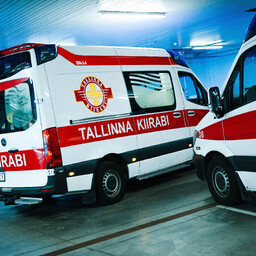Ambulances are intended for transporting patients in critical condition. However, hospitals and care homes also use them for transporting less critical patients.
This does not happen often. For example, in Lääne and Põlva counties, such trips account for 8%. Across Estonia, it is 3-4%. However, each such trip may delay the ambulance's arrival to a serious patient.
For example, transporting patients from Narva to Tallinn takes about 2 hours. The return trip without a patient takes 3 hours. One such trip takes a quarter of the ambulance brigade's working day.
According to the head of the Ministry of Social Affairs, Nikita Panjuškin, ambulances are often used for planned trips. This is done because there are not enough medical transport providers in each county. There are also funding issues.
According to planned changes, it will be necessary to more clearly distinguish when to use an ambulance, social transport, or a taxi. It will also be necessary to agree on who will pay the transportation costs.
Panjuškin says that private companies are now more interested in providing medical transport to hospitals. However, Ain Suurkaev, the head of Rakvere Hospital, is cautious. He says that this service cannot always be planned in advance.
Suurkaev believes it would be better to increase the ambulance capacity. The analysis of planned changes is expected to be completed in 2026.

